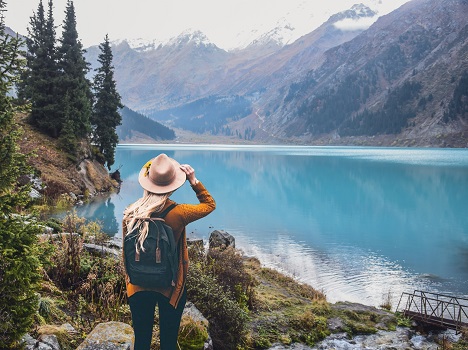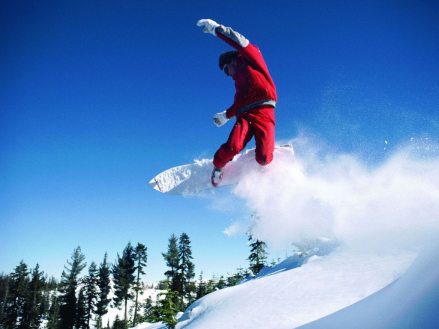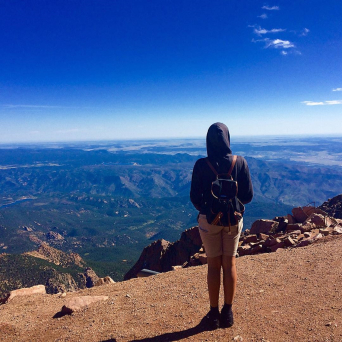- Share
Alfred Brehm’s essay about Kazakh steppes is probably the most poetical piece of this genre of literature.
We have already told you about Alexander Humboldt’s trip to Kazakhstan in 1829, the greatest German geographer. In the spring of 1876 one more famous German naturalist visited the steppes, the author of zoological bestseller “Animal’s Life”, Alfred Brehm.
Period of changes in the steppe
In a period of half a century great changes had taken place in parts of Central Asia. All of the land conjoined to the Russian Empire’s territory, and travelling across the steppe was no longer an extreme experience, turning into a routine trip along the postal road, through the stops and stations with inns and horse changing points. However, in European perception, these places still remained unexplored and exotic and, therefore, were worthy travel destinations for spending money and effort – both of which were required in considerable amounts. Establishment of simple infrastructure couldn’t shorten the huge distances between destinations; the steppe climate with its challenging continental character and unpredictable behavior hadn’t changed either. The trip of Germans across Kazakhstan was called an expedition, and was just called that, as the true nature of the trip could be categorized as fully-fletched science tourism.
Companions and fellow travelers
Alfred Brehm (1829-1884) wasn’t the only participant (although, he was the most significant of them all) of the expedition supported by the Bremen Geographical Community and created under the patronage of the earl Carl von Waldburg-Zeil-Trauchburg. The earl, a man of science, was educated in the Forestry and Agricultural Academy as well as in Leipzig University and, in the course of his education, he was collecting herbarium and and was barely present to look over the kingdom.
The official chief of the expedition was considered to be Otto Finsch (1839-1917), one more distinct German zoologist who was popular for his long time studies on parrots of the Pacific Islands. The expedition was sponsored by the famous Russian merchant, a patron of the arts, Alexander Sibiryakov: he gave away 20,000 deutsche marks.
Additionally, the expedition was accompanied by a high-ranking regional historian and explorer of Inner Asia, Vladimir Poltoratskiy, the governor of the Semipalatinsk region at that time. With his spouse Lyubov Poltoratskaya, who was also famous in the scientific community for her work in geography and ethnography, Vladimir accompanied the Germans within the boundaries of his region.
The Route. Only steppes around us!
On the territory of Kazakhstan the route was lying within two regions at the time – Semipalatinsk and Semirechensk (nowadays East Kazakhstan and Almaty Provinces): Altai Mountains, Zaisan Lake, Tarbagatay Mountains, Lake Alakol, Dzungarian Alatau Mountains. However Brehm didn’t travel farther than the Lepsinsk area.
For the most part the road passed through the steppes. But at a closer look the steppes didn’t seem like a monotonous landscape at all, as it may seem like when living in Germany. Comparing images of the steppe, that Brehm had seen in Kazakhstan, with the landscapes of his motherland he wrote: “It would be unfair to say that the steppes lack attractive and even majestic landscapes. Northern Germany is much more dull and monotonous than the steppes… Flora of the steppes is very rich with its species, much richer, than it is generally expected, and that I myself thought, until I faced it upfront.” It is worth mentioning that Germans were very lucky in terms of the seasons – spring in the steppe is admired even by the local people, so there’s nothing to say about how much foreign travelers would love it. “Spring might seem to be more beautiful in tropical countries, however, nowhere else does spring have such a charming effect. Together with the flora, spring awakens the typical kazakh animals of the steppes… A few animal species that are typical to the steppes appear in great numbers and attract one’s attention.”
The naturalists were also lucky with the epoch of their expedition. At the end of the 19th century the nature of Kazakhstan was richer and full of various species. Here is the observation made by the author of “Animal’s Life”: “When we were passing by between Zaisan Lake and the Altai Mountains on 3rd June 1876, we met no less than 15 kulans in one morning”. So there is a good reason why within a short period of time the expedition acquired a significant collection of mammals, amphibians (150 samples), and fishes (400 samples). Especially, birds – 560 bird’s carcasses were taken away to Germany. Moreover, the scientists caught thousands of insects, took lots of minerals and mountain rock samples, dry plants, and even Kazakh household items. All these items were exposed at numerous exhibitions arranged by the naturalists upon their return to Germany, and later became a part of the collections of many European museums (perhaps, some items are still there now!)
Brehm about the Kazakh people: “A favourable impression on an impartial observer”
Charmed by the free life of the nomads, Alfred Brehm constantly distracted himself from his observations in the nature by turning his attention to people. This is confirmed by his notes which are, perhaps, are valuable not because of precious scientific observations, but with the bright descriptions of a Kazakh’s life in the regions they explored. Here are several fragments from Brehm’s descriptions of Kazakhs:
“Kazakhs are true nation of horsemen – it is hard to imagine them without a horse; they grow up with foals and live with their horse for the whole life until the horse dies.”
“A Kazakh huntsman possesses courage and endurance. He demonstrates great ability not only in horse riding but also in the art of stealth and stalking the game.”
“A Kazakh man appreciates headwork much more above physical. His quick and lively mind constantly requires mental food; he likes not only simple but also challenging activities of various types…”
“It is easy to understand why this nation respects singers and storytellers. In this sense, all of them are equal around each other: rich and poor, high-ranked and ordinary, educated and uneducated people. Their sonorous language, rigid though, is incredibly expressive.”
“Consciousness of power and agility, smartness in horse riding and hunting, poetical talent and quickness of mind in general, feeling of self-sufficiency and freedom presented by the steppe – all these make a Kyrgyz man behave with confidence and dignity.”
“That’s why he makes a favorable impression on an impartial observer, especially, when one gets to know him closer. I have experienced that myself, and the same opinion was expressed by Russians who have got long-time relationships with Kyrgyzs.”
Kazakhs about Brehm: “A huge nose!”
It is rare when we get an opportunity to hear what the locals have to say about the travelers – what do main characters think about the author of these travel sketches? How do locals see travelers? In case the of Brehm there is a possibility to slightly fill this gap in; this is what Vladimir Proskurin, a famous Kazakhstani historian who now lives in Germany, had wrote: “In the memory of the local people the German hunter remained as “Ulken Nemes” (“A Big German”) or “Zor Muryn” (“A Big Nose”). Brehm liked translating “steppe rhapsodies ” in his own manner, he was also reading “Faust” in front of village habitats…”
Brehm’s nose made a great impression not only on the locals – this is how Ivan Slovtsov, a historian from the Omsk region at that time, described it: “A huge man, 37 years old with straight hair slicked back, as a young vicar, and cut in a circle, with a big, even huge nose; a vibrant, vigorous, funny kazakh guy who jokes a lot…”
Why they all were so obsessed with the nose?
Instead of epilogue. Soul transformation
Alfred Brehm’s essay about Kazakh steppes and its habitats can be categorized as the most poetical creation of this genre of literature. It is interesting that these enthusiastic and romantic notes were written by a man who never possessed humanism, political correctness, and complementarity. It is enough to recall his first trip to Sudan, where young German travelled with his favorite whip made out of rhino’s skin and he liked to use it as an argument in his conversations with Africans.
But… Let by-gones be by-gones! Proper travels are important for the effect it makes in life – every time when people return home, they feel themselves renewed and changed, equipped with new knowledge and expertise, having a transformed soul. If one doesn’t benefit in this way, then it can’t be called true travelling, but just a waste of time, energy and money!













.jpg)







